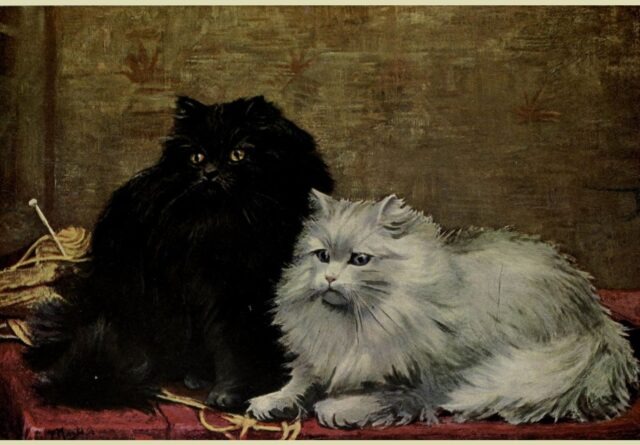From Kristine Kathryn Rusch:
This morning, a regular reader of my blog forwarded a tweet to me from a bookseller and writer about supply chain issues for books. He then suggested I blog about those issues.
I had planned to, but I had a vague hope that they would improve. The bookseller’s tweet disabused me of that notion.
The tweet is below. Read the thread, and note that she does have a book coming out. In fact, I had initially thought she was a writer, not a bookseller and this had happened to her. (That’s what I get for reading things early in the morning.)
Well, it had happened to her, but her as a bookseller, not her as in her current release. Here’s the link to the tweet.
For those of you who won’t bother to read the thread, she goes on to say that this is extreme red alert territory, because the book comes from Random House. Others chimed in with knowledge about other books going through similar issues or the way that they’re dealing with this.
I know some of you live under rocks and/or have decided not to pay attention to anything right now (and boy, do I relate), but surely even you all have noted the supply chain issues.
Your favorite grocery store doesn’t stock the same things it used to. My cats’ usual cat food has been discontinued (after years) because it includes some kind of tuna that’s no longer available. (Every supplier I know suggests I get them chicken, but Cheeps loathes chicken. I know. He’s not really a cat.) Fortunately for the cats, I found a variety pack of other food that they like better (even though that has supply issues as well), so all’s well that ends well there.
But half of what I usually buy, whether in person or online, has had some kind of delay due to some missing part. In 2020, we bought a new living room set, and that included 2 ottomans. The couch and loveseat were in stock, but the ottomans weren’t. It took four months for those to be delivered.
So, when we bought another new furniture set because of the move, we instructed the poor sales person to show us only items that they had in their warehouse. That took forever, because most sets had only one or two items in the warehouse, not everything.
We also somewhat optimistically partnered with another company on a game for a 2020 Diving Kickstarter. The game manufacturer went to China for his product, which hadn’t been a problem in the past. Then…well, you know. After a year, we will be refunding the game money. We’ll do the game when we have it in our hot little hands and not before.
The game manufacturer is dealing with this kind of delay on many of his products. I can’t imagine what that’s doing to his bottom line.
The New York Times had a pretty good article on the supply chain issues. (I’m sure you can find others.)
Paper books are no exception. In fact, Ingram sent out a series of warnings about the problems it anticipates in the Fourth Quarter. As those of you who follow several indie publishers on social media probably already know, one of those changes that Ingram Sparks has implemented are price increases, effective on November 6, 2021.
These increases are not small. The U.S. market will see a 6% increase, and the U.K. and Australia will see a 3% increase. As one publisher noted, that will make some of his hardcovers $40 or more. Ingram helpfully adds that they will be “We will also be identifying titles that will move into negative publisher compensation because of these price changes…”
In other words, they’ll let publishers who are going to lose money with the new pricing structure know before the new structure hits.
That’s just one way this is impacting publishing. There are other ways.
Let’s start with traditional first, because traditional publishers are making some amazing and difficult decisions. I actually have some empathy for them, because they’re not built to absorb this problem. Then I’ll move to indie, which can deal with the problem, with patience and a bit of creativity.
Traditional publishing, as I have written many times, is built on the velocity model. Books must sell quickly out of the gate, and then taper off later. Sometimes books that sell quickly sell faster than expected, and the demand is higher than originally thought.
In the past, the solution (though not ideal) worked well enough: the moment it became clear that the traditional publisher would blow through their inventory, they would sent in an order for reprinting. In the unlikely (but joyful) event that the first reprinting wasn’t enough, there would be a second, third, fourth and fifth.
Those days are now gone. As you can see from the tweet above, a book published two weeks ago has sold very well, but the publishing representative, talking to the bookstore that wants more copies, had the unenviable task of telling the store the book would not be reprinted.
At all.
Sounds like a stupid thing to do, right? And it is. If traditional publishing had a different business model, they would simply tell booksellers to be patient. The reprint would come eventually.
But that’s not happening.
This is because traditional book publishers must reserve time with their printers. Because everything is new, new, new, the new books get the most attention. Their printings are scheduled months in advance—a practice that has been part of traditional publishing forever.
Because of the supply chain problems and worker shortages and driver shortages and a whole bunch of other things that have an impact on paper books, there is less time to be reserved from printers, not more. That means that traditional publishers are pretty much guaranteed to get their first printings on their latest releases…and nothing else.
Even those first printings are delayed. As Ann Trubeck of Belt Publishing noted, it used to take two weeks to get a book printed. In July, it was taking her eight weeks.
Ingrams is encouraging booksellers to stock up early on the “hot” books of the season (whatever you guess they might be). But Ingrams is also encouraging publishers to print more books than usual, so that they will have books on hand, rather than run out.
But that traditional publisher, Ann Trubeck of Belt Publishing, included something quite savvy in her post. She wrote,
It is entirely possible to lose money by selling more copies than anticipated because an algorithm or overoptimism or “just in case” caution leads to large orders that force publishers to print more copies, only to have that demand evaporate, and all those freshly printed, last minute copies are sent back to the warehouse in a tsunami of bruised, tired cardboard boxes.
Remember, in traditional publishing, returns get eaten by the publisher. Booksellers who over-order can send books back for full credit, if they do so in the right amount of time.
So the traditional publisher put a lot of money into the product and find that they can’t sell it.
This is hard enough for the publisher. And Trubeck isn’t the only one dealing with this, quite obviously. If you read through that thread on Twitter, you’ll see Random House authors mention that their first printing sold out in 2020, they were promised a reprinting, and it never happened.
It won’t happen.
There’s not enough room in traditional publishing right now. I like Trubeck’s voice, so I’ll show you once again her publishing perspective. She notes that on Ingram, many of her books show no copies available. But readers can order from her directly because they have copies stashed at the office. (I have no idea how big her offices are or how many direct sales she makes. Probably not enough.)
Here’s what she says about that:
It’s as scary to anticipate losing sales as it is to be too late with an additional print run, but we will have books available for those who do an extra google search. This line of thinking leads, of course, to this thought: “boy I hope CBS News does NOT cover our October release, and nothing is nominated for a major award this fall!”
Now imagine that from the traditionally published writer’s point of view. They believe they hit the jackpot. Their book came out and got reviewed positively in every single mainstream publishing venue. Their book is the book of the moment—the kind of book that gets a crapload of attention, like so many political books got last year. Suddenly everyone wants to read that book, so folks who like paper order paper…and are told the book is out of print.
Then the book gets nominated for every single major award in publishing (that the book is eligible for). There’s no way, with a minimum of an eight-week delay on printing and time reserved ahead for the new, new, new, that their book will ever be reprinted in time to catch the wave.
Their publisher, who has been around the block a few times, knows that. Knows it very well in fact. So well, that after all the early COVID returns in 2020 (for full credit from closed bookstores) and because of all the supply chain issues and everything else, the publisher won’t even try to reprint.
The publisher will pat the author on the head, congratulate them for a job well done, and move to the new, new, new.
And the writer’s big perfect and wonderful launch—in which everything went right according to the traditional publishing gods—will result in a ruined career, because the books will not sell because there are not enough copies of the book to sell.
Worse, the people who read ebooks don’t like ebooks priced over $10. So, ebook readers will hear about this book, click on it, see that the price is $14.99 and will not buy. The paper book buyer will pick up the ebook, if forced, but will look at the price and think, “What the hell am I getting for my $14.99? I want something to put on my shelf. Ebooks should be cheaper.”
As a result, the ebook sales will increase, but not enough to cover the lost print revenue. Not by a long shot.
(And if you think I’m exaggerating the ebook prices of traditional books, I’m not. I did a spot check on books released this month—books that I preordered in paper from traditional publishers—and the cheapest one I found (from a non-bestseller) was $11.99.)
Sadly, this pandemic and the supply chain problems that will be with us, according to one estimate I saw, until early 2023, will tank a lot of traditional writers’ careers.
Yes, traditional publishers will know that a book that came out in 2021 will have lower print sales than a book that came out in 2019, but honestly, they won’t care. Because there are always new, new, new writers lining up to be fleeced. I mean, traditionally published.
Sigh.
Link to the rest at Kristine Kathryn Rusch









